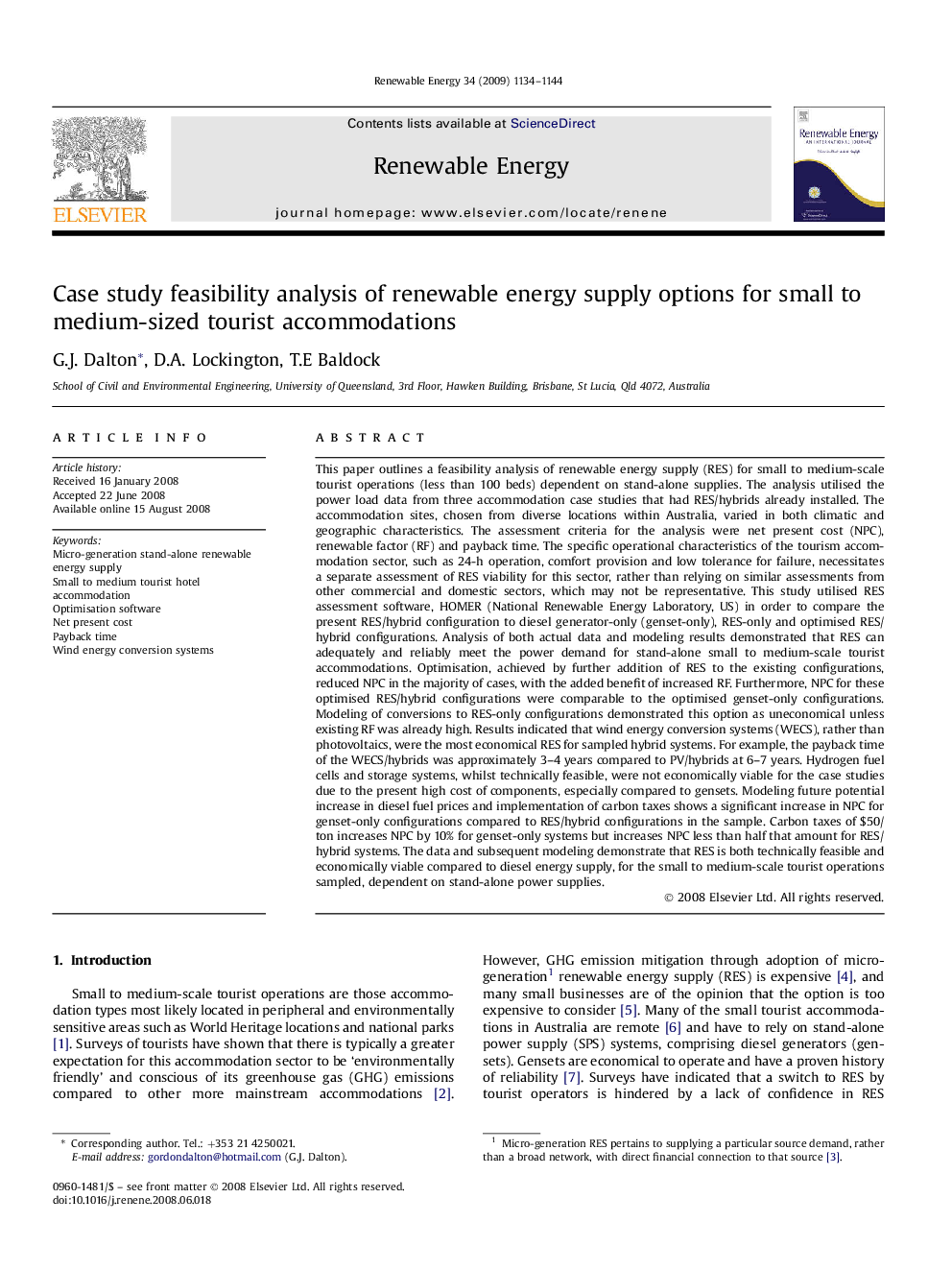| کد مقاله | کد نشریه | سال انتشار | مقاله انگلیسی | نسخه تمام متن |
|---|---|---|---|---|
| 302035 | 512525 | 2009 | 11 صفحه PDF | دانلود رایگان |

This paper outlines a feasibility analysis of renewable energy supply (RES) for small to medium-scale tourist operations (less than 100 beds) dependent on stand-alone supplies. The analysis utilised the power load data from three accommodation case studies that had RES/hybrids already installed. The accommodation sites, chosen from diverse locations within Australia, varied in both climatic and geographic characteristics. The assessment criteria for the analysis were net present cost (NPC), renewable factor (RF) and payback time. The specific operational characteristics of the tourism accommodation sector, such as 24-h operation, comfort provision and low tolerance for failure, necessitates a separate assessment of RES viability for this sector, rather than relying on similar assessments from other commercial and domestic sectors, which may not be representative. This study utilised RES assessment software, HOMER (National Renewable Energy Laboratory, US) in order to compare the present RES/hybrid configuration to diesel generator-only (genset-only), RES-only and optimised RES/hybrid configurations. Analysis of both actual data and modeling results demonstrated that RES can adequately and reliably meet the power demand for stand-alone small to medium-scale tourist accommodations. Optimisation, achieved by further addition of RES to the existing configurations, reduced NPC in the majority of cases, with the added benefit of increased RF. Furthermore, NPC for these optimised RES/hybrid configurations were comparable to the optimised genset-only configurations. Modeling of conversions to RES-only configurations demonstrated this option as uneconomical unless existing RF was already high. Results indicated that wind energy conversion systems (WECS), rather than photovoltaics, were the most economical RES for sampled hybrid systems. For example, the payback time of the WECS/hybrids was approximately 3–4 years compared to PV/hybrids at 6–7 years. Hydrogen fuel cells and storage systems, whilst technically feasible, were not economically viable for the case studies due to the present high cost of components, especially compared to gensets. Modeling future potential increase in diesel fuel prices and implementation of carbon taxes shows a significant increase in NPC for genset-only configurations compared to RES/hybrid configurations in the sample. Carbon taxes of $50/ton increases NPC by 10% for genset-only systems but increases NPC less than half that amount for RES/hybrid systems. The data and subsequent modeling demonstrate that RES is both technically feasible and economically viable compared to diesel energy supply, for the small to medium-scale tourist operations sampled, dependent on stand-alone power supplies.
Journal: Renewable Energy - Volume 34, Issue 4, April 2009, Pages 1134–1144